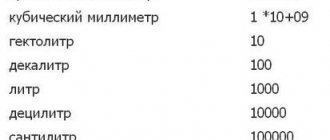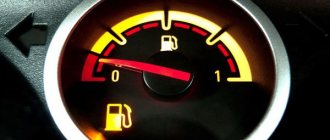Converting kilograms, centners and tons to liters can be done using any publicly available online unit converter. Such applications are suitable for solving most mathematical and physical problems. But when it comes to fuel, in particular gasoline, a simple translation is not enough. To correctly calculate the number of liters in one ton of fuel, you will need to take into account some other characteristics of the fuel.
How many liters are in a ton of gasoline?
Why might it be necessary to convert these values at all, and why does someone estimate the amount of gasoline in tons, and others in liters?
The fact is that when selling large quantities of gasoline and many other petroleum products, the weight and volume of the liquid is assessed. Car owners are accustomed to counting gasoline quantitatively in liters - this is the volume of fuel that fills the gas tank. For accounting and finance departments that prepare receipts and reporting documents, it is often easier to calculate the cost of fuel purchased or sold in tons. Kilograms determine the weight of the fuel.
There is no universal calculation of the number of liters per ton of gasoline. The calculation will be different for different brands of fuel. When recalculating, the following indicators must be taken into account:
- specific gravity of gasoline;
- mass of the initial batch of fuel;
- fuel and ambient temperature.
The first and last criteria are changeable - this means that you need to calculate the number of liters for each brand of gasoline separately, having previously decided on a standardized temperature that will be taken as the norm.
Table for converting natural fuel into conventional fuel
Conventional fuel is fuel whose calorific value of 1 kg or 1 nm³ is equal to 7000 kcal. It is most often measured in tons, so a common abbreviation in various sources is t.u.t. (means that this is a ton of standard fuel).
Below is a table with average coefficients for converting natural fuel into conventional fuel.
| Coal by basins and deposits | |
| Altai coal, ton | 0,782 |
| Bashkir coal, ton | 0,565 |
| Vorkuta coal, ton | 0,822 |
| Georgian coal, ton | 0,589 |
| Donetsk coal, ton | 0,876 |
| Inta coal, ton | 0,649 |
| Kazakh coal, ton | 0,674 |
| Kamchatka coal, ton | 0,323 |
| Kansko-Achinsk coal, ton | 0,516 |
| Karaganda coal, ton | 0,726 |
| Kizelovsky coal, ton | 0,684 |
| Kyrgyz coal, ton | 0,570 |
| Kuznetsk coal, ton | 0,867 |
| Lviv-Volyn coal, ton | 0,764 |
| Magadan coal, ton | 0,701 |
| Podmoskovny coal, ton | 0,335 |
| Primorsky coal, ton | 0,506 |
| Sakhalin coal, ton | 0,729 |
| Sverdlovsk coal, ton | 0,585 |
| Silesian coal, ton | 0,800 |
| Stavropol coal, ton | 0,669 |
| Tajik coal, ton | 0,553 |
| Tuvan coal, ton | 0,906 |
| Tunguska coal, ton | 0,754 |
| Uzbek coal, ton | 0,530 |
| Ukrainian brown coal, ton | 0,398 |
| Khakass coal, ton | 0,727 |
| Chelyabinsk coal, ton | 0,552 |
| Chita coal, ton | 0,483 |
| Ekibastuz coal, ton | 0,628 |
| Yakut coal, ton | 0,751 |
| Charcoal, storage m³ | 0,93 |
| Estonian slates, ton | 0,324 |
| Leningrad slates, ton | 0,300 |
| Peat | |
| Milled peat (at a relative humidity of 40%), ton | 0,34 |
| Lump peat (at a relative humidity of 33%), ton | 0,41 |
| Peat crumb (at a relative humidity of 40%), ton | 0,37 |
| Dry metallurgical coke 25 mm and above, ton | 0,99 |
| Coke 10-25 mm in terms of dry weight, ton | 0,93 |
| Coke breeze, ton | 0,90 |
| Fuel briquettes (at a relative humidity of 16%), ton | 0,60 |
| Gas | |
| Petroleum refining dry gas, ton | 1,50 |
| Combustible natural gas, thousand m³ | 1,15 |
| Associated flammable gas, thousand m³ | 1,3 |
| Liquefied gas, ton | 1,57 |
| Fuel oil | |
| Fuel oil, ton | 1,37 |
| Naval fuel oil, ton | 1,43 |
| Oil, including gas condensate, ton | 1,43 |
| Waste oils, ton | 1,30 |
| Fuel for low-speed diesel engines (motor), ton | 1,43 |
| Diesel fuel, ton | 1,45 |
| Household heating fuel, ton | 1,45 |
| Automotive gasoline, ton | 1,49 |
| Aviation gasoline, ton | 1,49 |
| Kerosene for technical purposes (tractor), ton | 1,47 |
| Kerosene for lighting, ton | 1,47 |
| Jet fuel (aviation kerosene), ton | 1,47 |
| Firewood | |
| Firewood for heating, dense m³ | 0,266 |
| Wood scraps, shavings, sawdust, ton | 0,36 |
| Wood sawdust, storage m³ | 0,11 |
| Branches, needles, wood chips, storage m³ | 0,05 |
| Stumps, storage m³ | 0,12 |
| Logs from dismantled old buildings, sleepers that have become unusable, communication poles, a mine stand, dense m³ | 0,266 |
| Bark, ton | 0,42 |
| Agricultural waste, ton | 0,50 |
Among the characteristics of fuel, the main indicator of fuel is considered to be the specific heat of combustion, and the standard fuel indicator is used primarily to compare certain types of fuel with each other.
The category of “standard fuel” is used almost everywhere; it is quite universal. Thus, in Russia and the former Union countries, a unit of equivalent fuel was/is called the heat-releasing capacity of a kilogram of coal, which is equal to 7000 kcal or 29.3 MJ. In European countries - and in general in international designation - a unit of standard fuel is calculated using oil equivalent, which is called: TOE, or Tonne of Oil Equivalent, which is equal to 41.868 GJ.
In the USA, instead of “standard fuel”, the concept of “thermal price” is used, which is calculated in dollars and, as is correct, varies dramatically depending on the type of fuel (solid, liquid, gaseous).
Using the standard fuel category makes it easier to make calculations and evaluate the potential of a particular type of fuel for its subsequent use in boiler plants.
Today, calculate a unit of standard fuel not only using a formula, but also using free online calculators on the Internet.
How many liters of gasoline in a ton of gasoline 92
So, he will try to calculate the number of liters in a ton of AI-92 gasoline. The fuel has an octane number of 92, obtained by research method.
First, we determine the density of a given brand of gasoline. This indicator quantifies the mass of a flammable hydrocarbon-type component in a specific volume of liquid and is expressed in kg/m3. Density is determined by testing at a temperature of +15 degrees. For AI-92 gasoline it is 740-770 kg/m3.
Next, from the school physics course, we remember how to correlate the existing values. Mass is the result of multiplying the available volume by the known density of that volume. In the case of gasoline, we need to multiply the average specific gravity (take the value of 740 in relation to AI-92) by the volume (one ton):
- the volume of one liter of gasoline is 0.001 m3;
- multiply the density of 740 kg/m3 by 0.001 m3, we get 0.74 kg.
Total - in 1 liter of AI-92 gasoline we have 740 grams of weight. It turns out that the higher the density of the fuel, the higher its mass will be. One ton of substance contains 1000 kg. Consequently, 1 ton of the mixture contains 1351 liters of gasoline with a density of 740 kg/m3.
Why is this even needed?
Why do people need to know how many liters of diesel fuel are in 1 ton? Everything is simple when it comes to buying small volumes of diesel fuel: we arrived at the gas station, filled the tank full and drove on. However, not all so simple. Companies that purchase large volumes of fuel calculate in other units of measurement - tons or kilograms. And this is completely logical, because the volume of diesel fuel is not a constant quantity and can change. For example, a person will buy 500 liters of fuel in the summer when it’s hot, but in the fall when it gets cold it turns out that there are only 450 liters left in the tank. It turns out that he overpaid the seller 50 liters. And if payment was made for kilograms or tons, then nothing like this would happen, and no one would be at a loss, since the weight remains unchanged.
Therefore, all major sales/purchases of this product are carried out taking into account the weight, and not the volume of diesel fuel, since diesel fuel in tons and liters is not the same thing.
How many liters of gasoline in a ton of gasoline 95
Using the above method, we calculate how many liters of gasoline are contained in a ton of AI-95. The table value of the density of this brand of fuel is from 745 to 755 kg/m3. We take the average value of 750 kg/m3.
Let's do the calculation:
0.001 m3 * 750 kg/m3 = 0.75 kg.
One ton of product will be equivalent to a volume of 1333 liters.
How to convert liters to tons of gasoline: conversion formula
The principle of calculating fuel mass is the same for all brands of gasoline. For convenience, we present here a general conversion formula that is relevant for any fuel, regardless of the octane number. The only thing you need to know for calculations is the density of the fuel at a temperature of +15 degrees. These values can be found in any reference table, including on our website.
We know that the specific gravity of gasoline shows the ratio of the weight of the fuel to its volume. In physics it looks like this:
ρ = m / V, where ρ is density, m is mass, V is volume.
We swap the values of the equation and get a formula for calculating mass:
m = ρ * V, where ρ is the tabular value of the density of a certain brand of gasoline, V is the volume in m3 (liters can be converted to m3 in any online converter). The value of m is defined in kilograms or grams.
Now let's try to calculate the weight of a large volume of fuel. Let's say we need to determine how many kilograms are in 900 liters of AI-98 gasoline.
Following research data, the density of this brand of gasoline is 780 kg/m3. This means that the volume of 1 liter is 780 * 0.001 m3. We have 900 such liters. We get the formula:
900 * 780 * 0.001 = 702 kg. To determine the number of tons, you need to divide the last digit by 1000:
702 kg / 1000 = 0.702 tons.
Liter size [edit | edit code ]
1 liter by the current definition is exactly 1 cubic decimeter: 1 liter = 1 dm³ = 0.001 m³ (thus 1 cubic meter (m³), the official SI unit for volume, is exactly 1000 liters).
This definition was adopted in 1964 at the 12th General Conference on Weights and Measures [1].
Prior to this, in 1901, by the decision of the 3rd General Conference on Weights and Measures, a liter was defined as the volume of 1 kilogram of pure water at normal atmospheric pressure (760 mm Hg) and the temperature of the highest density of water (+3.98 ° C) . One kilogram, in turn, was defined as the mass of a platinum-iridium cylinder, the standard kilogram stored in France, the mass of which was also initially assumed to be equal to the mass of 1 liter of water under the above conditions. However, it was later determined that the mass of the cylinder was twenty-eight parts per million greater, and therefore the volume of a liter was 1.000028 dm³. It should also be taken into account that the relationship between the mass and volume of water (like any liquid) is not constant and depends on temperature, pressure, humidity and isotopic homogeneity. Thus, in 1964, they abandoned the connection of the liter to the mass of water or any other substance and defined the liter as equal to exactly 1 dm³.
According to recent measurements of a standard sample of pure distilled water isolated from ocean water and considered representative of the oxygen and hydrogen isotopic composition of ocean reservoir water (en: Vienna Standard Mean Ocean Water), the density of water is 0.999975 ± 0.000001 kg/ l at a temperature of maximum density (+3.984 °C) under a pressure of one standard atmosphere (760 torr, 101,325 Pa). [5]
Temperature dependence and conversion factor
It will be more difficult to answer the question of what formula to use to convert gasoline from liters to tons or vice versa under changing environmental conditions. Previously, we made calculations based on the fact that the fuel temperature is +15 degrees. How to calculate the mass of fuel in any volume if the temperature fluctuates?
Gasoline is a heat-sensitive substance. When heated, the volume of fuel increases, while its nominal density decreases. This property makes it much more difficult to calculate the amount of fuel purchased or consumed, which can distort the reliability of financial documents. Therefore, the tax authorities of the Russian Federation require that the mass and volume of products be calculated taking into account the temperature coefficient.
The basis for the calculation methodology is:
- GOST 2084-77 “Automotive gasolines. Technical conditions";
- Letter of the Federal Tax Service of the Russian Federation dated March 24, 2005 N 03-3-09/0412/23 “On the procedure for converting the amount of petroleum products from volume units to weight units.”
The same documents determine that it is necessary to establish the exact density of a specific gasoline label using special reference tables that determine the specific parameter in increments of 1 degree Celsius.
Having established a specific value for the density of gasoline at a specific temperature, you can use the general conversion formula, which is given in this article.
Another way to determine mass under conditions of temperature change is by calculation taking into account the conversion factor. It happens as follows:
- The documentation for the brand of gasoline indicates the density of the substance at a temperature of +20 (or +15, depending on the fuel) degrees;
- We measure the nominal temperature value in the fuel tank;
- We calculate the difference between the obtained result and the standard +20 degrees;
- In the table of coefficients, we look for the value of the correction by 1 degree specifically for the density value indicated in the product passport;
- We multiply the temperature difference by the found coefficient;
- Next are two options. If the temperature in the tank is more than +20 degrees, then from the standard density we subtract the number obtained in the previous paragraph. If the temperature is below +20 degrees, then we add the number.
The density of gasoline in most cases ranges from 720 to 780 kg/m3. We convert the data to g/cm3 and get the following table:
Table 1
Gasoline density values and conversion factors
| Density for +20 C | Conversion factor per 1 degree |
| 0,720 — 0,729 | 0,870 * 10^(-3) |
| 0,730 — 0,739 | 0,857 * 10^(-3) |
| 0,740 — 0,749 | 0,844 * 10^(-3) |
| 0,750 — 0,759 | 0,831 * 10^(-3) |
| 0,760 — 0,769 | 0,818 * 10^(-3) |
| 0,770 — 0,779 | 0,805 * 10^(-3) |
A simple example of a translation calculator. Let’s say the temperature difference is –5 degrees (the temperature inside the fuel tank is +15 degrees). At the same time, the density of gasoline at a temperature of +20, indicated in the documentation, is 740 kg/m3, that is, 0.740 g/cm3. The current correction for this fuel, based on the table data, is 0.844 * 10^(-3) for each degree. For five degrees, the correction will already be 0.844 * 10^(-3) * 5 = 0.0042 g/cm3. Since the temperature in the tank is below normal, we add the resulting coefficient to the initial density: 0.740 + 0.0042 = 0.7442 g/cm3 or 744 kg/m3.
#Petrol
Origin of the name and designation [edit | edit code ]
Historically, the name “liter” comes from the old French unit of volume “litron” (fr. litron). The litron was used as a measure of bulk solids and constituted ¹∕₁₆ part of the boisseau
).
The size of a litron was approximately 0.831018 modern liters. The name "litron", in turn, arose as a derivative of the Greek litra
(ancient Greek λίτρα).
The liter was the name given to the silver coin (and its corresponding weight) used in the ancient Greek colonies, especially in Sicily. As a coin, the liter was close to an obol [6] and its weight was equal to one third of the ancient Roman libra (≈327.45 g). Most likely, when the Greeks colonized Sicily, they entered into trade relations with the local population, who had a coin and a corresponding unit of weight libra
, and the Greeks adopted this name for their coins under the guise of
litra
[7].
At the same time, there was also a measure for measuring the volume of oil libra
, implemented using a horn with marks applied to it.
The marks divided the horn into 12 equal parts (ounces), and together they made up the “libra” [8]. Just as in the case of a coin, there was a similar measure of volume among the Greeks, which, along with the name kotila (Ancient Greek κοτύλη), also had the name litra
(“liter” was the name of the vessel itself) [7].
The volume of the cauldron was approximately 0.284 liters (half a pint) [9]. The Roman word libra
in turn goes back to a stem used in the Mediterranean,
*lithra
, meaning "scales" [10].
Designation [edit | edit code ]
The designation for a liter in Russia is the lowercase letter “l” [11]. The same designation is used in Belarus, Ukraine, Kazakhstan and Mongolia. Until the mid-1990s, the Cyrillic designation was also used in Bulgaria (and continues to be used unofficially, although officially in this country the designations of all units of measurement were replaced by Latin ones in 1994).
Initially, the only international symbol for liter was the Latin small letter l
, taking into account the SI convention that unit designations may begin with a capital letter only if they are formed on behalf of the scientist.
The Latin letter l
can be quite easily confused with the number “1”, and this caused dissatisfaction, especially among representatives of medicine.
L
as the symbol for the liter .
The story became famous when Kenneth Woolner, an employee of the Canadian University of Waterloo, invented the mythical scientist Claude Emile Jean-Baptiste Litre, as an alleged attempt to obtain approval for the official use of a capital letter for the liter.
In 1978, Woolner's publication from the Department of Physics [12] appeared
in the university magazine Chem13 News The article was a joke, published in honor of April Fool's Day, but it was mistakenly reprinted by the IUPAC journal Chemistry International
, which published a message about the error in the next issue [13].
As a result, in 1979, the XVI General Conference on Weights and Measures adopted a decision according to which, as an exception, it was allowed to use two
different designations for a liter: lowercase
l
and capital
L
[14].
The US National Institute of Standards and Technology now recommends using the L
to denote a liter [15], this practice is also widespread in Canada and Australia.
In these countries, the symbol L
is also used with prefixes, for example,
mL
and
µL
, instead of the traditional
ml
and
µl
used in Europe.
In Great Britain and Ireland, as in other European countries, a lowercase letter ( ml
and
µl
) is used along with prefixes, and in the case of whole liters the word is often written as a whole (
1 liter
). In 1990, the International Committee of Weights and Measures stated that it was too early to choose one common symbol for the liter. Until 1979, the symbol ℓ (script small l, U+2113) became widespread, for example, it was recommended by the South African Bureau of Standards and Canada in 1970. The use of this symbol is still preserved on a small scale in English-speaking countries, while in Japan and South Korea it is used everywhere. Fonts that support South Asian characters (CJK characters) typically contain not only the ℓ character, but also four derived characters: ㎕, ㎖, ㎗ and ㎘ (U+3395 to U+3398) for microliters, milliliters, deciliters and kiloliters, respectively. The use of these symbols in printed works is contrary to recommendations published by the International Bureau of Weights and Measures at the insistence of the major international standards organizations (including ISO, NIST, IAU, IUPAC, IUPAP and NPL), which states that unit symbols should be “printed in roman type independently on the font type of the surrounding text" [16] [17].









